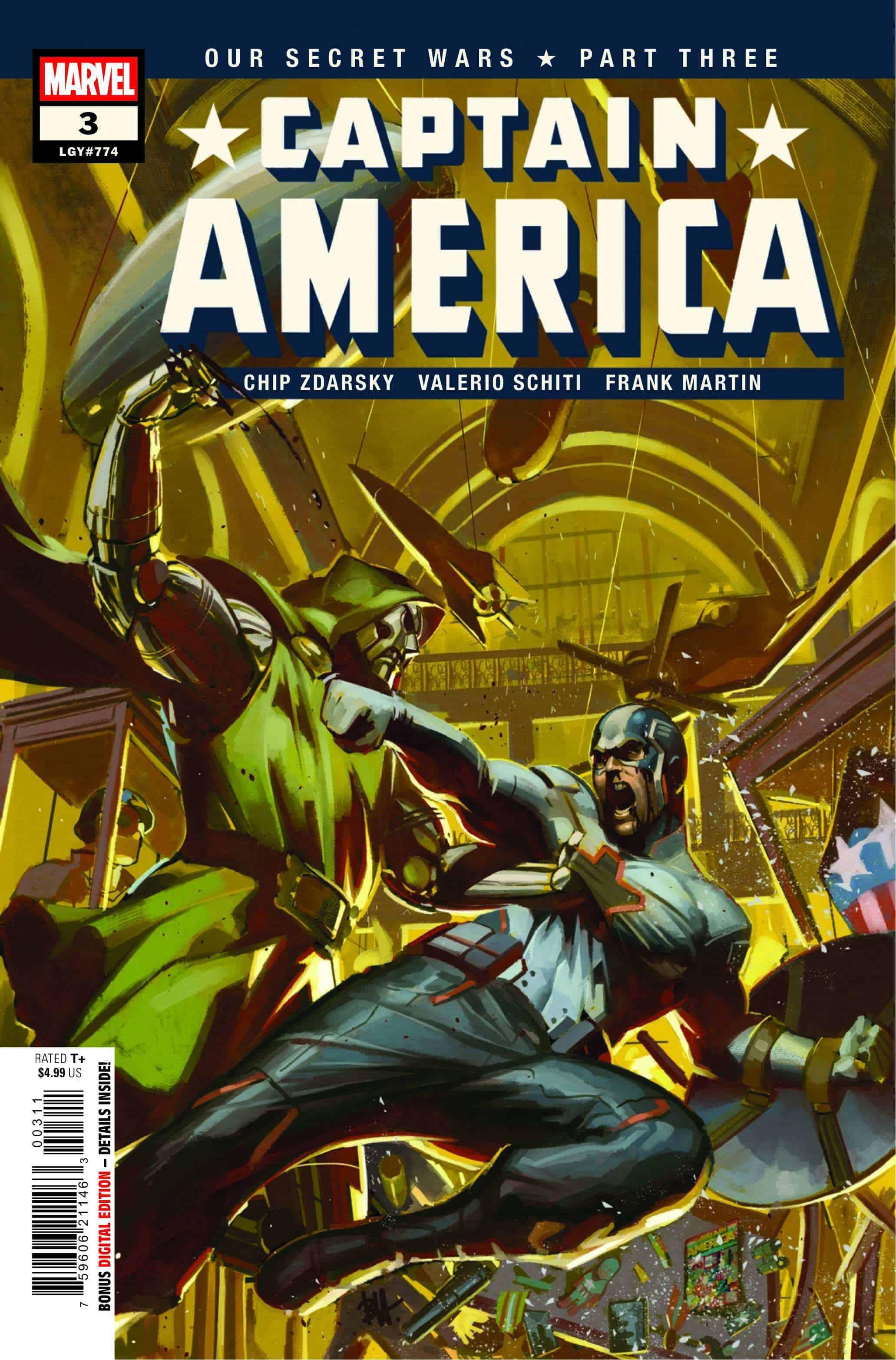Captain America #3

Recap
ORIGIN OF DOOM! A meeting with Doctor Doom in Latveria forces Steve to confront the realities of the harsh new world he's awoken in. Meanwhile, Dave Colton and the Howling Commandos infiltrate Doom's fortress to rescue hostages, but instead they uncover a sinister truth behind Doom's rise to power...
Review
Questions about the United States’ commitment to its ideals and discussions of whether it has or can live up to its potential are not uncommon in current discourse. Indeed, they are topics that have lingered for years, and Captain America #3 confront them head on.
Steve Rogers’ naivete is challenged with these very ideas in Captain America #3. But the irony is that they are expressed by Doctor Doom. Rogers pushes back on Doom’s assertion that everyone in Latveria is safe with the argument that exchanging freedom for safety is never an equal bargain. Doom replies that once upon a time, before Rogers went into the ice, that may have been true. He follows that with the various ways the United Stated no longer lives up to the “beacon on a hill” quality it once had.
Zdarsky doesn’t pull any punches in this discussion Like with previous two issues, it’s unclear if Captain America #3 represents any of his views. That’s beside the point, though, because Zdarsky is once again able to use modern political discourse as a way to challenge the Steve Rogers character in new and very relevant ways.
This discussion is further complicated by Zdarsky writing the counterpoint to Rogers’ in Doctor Doom’s dialogue. Can a dictator’s view of Rogers’ country be trusted? And even if it can, does that change what Rogers came to do? Giving legitimate arguments to antagonists is an easy way to complicate issues in fiction. A reader’s knee jerk response is often to distrust everything the villain says to challenge the hero.
The Colton flashbacks take a disturbing turn in Captain America #3. Current readers understand Iraq and Afghanistan in a way they don’t understand World War II. Additionally, the modern wars Colton took part in are viewed with heavy cynicism and suspicion in a way World War II is not. Colton’s backstory provides a strong counter to Rogers’.
Like Zdarsky, Schiti pulls no punches in Captain America #3’s art. Colton’s flashbacks are intensely visceral to the point of being hard to look at by issue’s end. Eventually the story pushes Colton past a breaking point, and Schiti captures that in the art. There is a moment that is both a horror and a tragedy combined. The final panel on the page closes in on the top of Colton’s face. Schiti draws a man crazed, his eyes wide. Martin adds to the moment, putting patches of a strangely gentle red around Colton’s eyes. The art here says more about Colton’s emotional state than anything Zdarsky could write.
Colton’s crazed moment doesn’t happen in a vacuum. A two page flashback sequence precedes it. The level of emotion Schiti and Martin capture in these 10 panels is second only to Colton’s breaking point sequence later.
Martin’s faded, not quite yellowed coloring for the flashbacks makes them feel more realistic to begin with, especially compared to the much brighter palette he favors for the present day.
Schiti’s depiction of Colton and his troops likewise has a more realistic quality. More subtle shading accentuates their features. Character emotions are, for the most part, subtler than their present day counterparts such as Steve Rogers. Even Colton’s intense emotional displays in the flashback are conservative compared to the present day. In most instances, Schiti communicates Colton’s emotions through his eyes. On a purely visual level, Colton’s flashbacks have more emotional depth than anything in the present.
Doom’s extended conversation with Rogers features a great deal of dialogue. Zdarsky’s Doom is not a man given to brevity, it seems. Caramagna keeps the dialogue bubbles well organized. Caramagna is able to keep them out of the way of Schiti’s art which is, at times, quite an accomplishment.
Final Thoughts
Zdarsky isn’t afraid to bring up major, sometimes divisive topics head on. He’s also willing in most cases to let the reader draw their own conclusions. This issue is no different than the first two in that regard. It’s a good way to keep the series both compelling and relevant to major issues of the day. All of that said, Captain America #3’s greatest strength is the powerful art in the issue’s final pages. If you haven’t picked up Captain America yet, do yourself a favor and grab an issue.
Captain America #3: Real Freedom
- Writing - 8.5/108.5/10
- Storyline - 7.5/107.5/10
- Art - 9/109/10
- Color - 9/109/10
- Cover Art - 7.5/107.5/10





